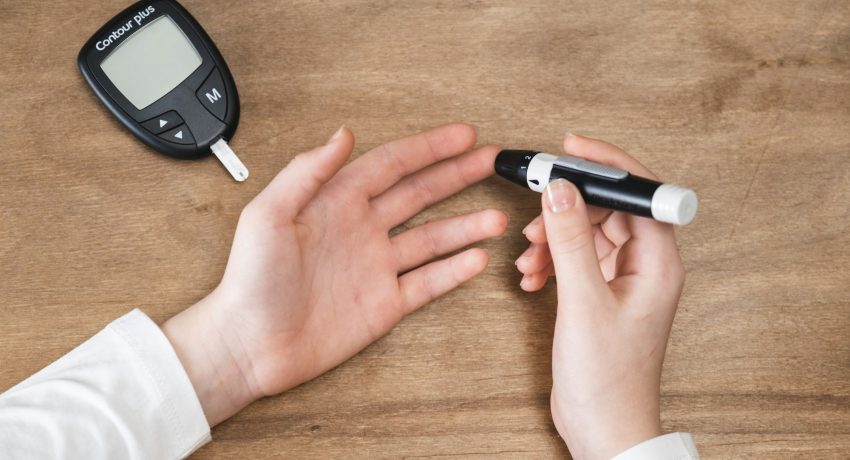Mark’s Transformation: Weight Loss and Blood Sugar Control
In a world where health trends can often be fleeting and confusing, the story of Mark’s transformation stands out as a remarkable journey of dedication, persistence, and profound change. With obesity and type 2 diabetes being critical health concerns globally, Mark’s accomplishments in weight loss and blood sugar control serve as an inspiring example for many.
The Starting Point: A Matter of Health and Happiness
Mark’s journey began when he received a wake-up call from his family physician. At the age of 45, Mark had developed significant health issues, primarily centered around his weight and escalating blood sugar levels. Weighing over 250 pounds with a body mass index (BMI) indicating obesity, he was diagnosed with type 2 diabetes. His fasting blood sugar levels were consistently above 150 mg/dL, far beyond the recommended range. Daily life was a struggle; energy levels were low, physical activities were arduous, and his emotional well-being was deeply affected.
Each day, Mark felt trapped in a cycle of fatigue, poor eating habits, and sedentary lifestyle. He realized that continuing down this path would not only jeopardize his health further but also significantly reduce his quality of life. The turning point came when he attended a family gathering and noticed he couldn’t keep up with his grandchildren’s playful energy. It was a moment of clarity; he needed to change, not just for himself but for those he loved.
Strategizing the Change: Setting Realistic Goals
Understanding that a radical transformation needed a solid plan, Mark sought help from various professionals. He consulted a dietitian, a personal trainer, and his endocrinologist to build a comprehensive plan that targeted both his weight and blood sugar levels. The initial step was setting realistic, achievable goals. Losing 50 pounds over a year and bringing his fasting blood sugar levels under 100 mg/dL became his primary objectives.
Gaining knowledge about his condition empowered Mark. He learned about the importance of a balanced diet, regular physical activity, and how specific foods impacted his blood sugar. This education formed the backbone of his action plan, allowing him to make informed decisions every day.
Diet: The Foundation of Transformation
Changing dietary habits is challenging, but it is indispensable for managing weight and diabetes. Mark’s dietitian recommended a low-carb, high-fiber diet that included lean proteins, healthy fats, and plenty of vegetables. Processed foods, sugary drinks, and high-carb snacks were replaced with whole foods. Portion control became essential, and Mark began to read nutrition labels meticulously to understand what he was consuming.
Meal prepping became a weekly ritual. This strategy ensured he always had healthy meals ready, preventing the temptation to resort to fast food. Mark discovered new recipes that not only met his dietary needs but were also delicious, ensuring he didn’t feel deprived. Incorporating fruits like berries, which have a lower glycemic index, and vegetables like spinach and kale became staples in his diet.
Exercise: Redefining Routine
Physical activity was another crucial component of Mark’s regimen. His personal trainer emphasized starting slow to avoid injury and burnout. Initially, Mark adopted a routine that included walking for 30 minutes every day. As his stamina improved, he gradually incorporated more intense workouts like strength training and aerobic exercises.
The consistent exercise paid off by not just shedding pounds but also stabilizing his blood sugar levels. Weight training helped in building muscle mass, which improved his metabolism, while cardio exercises improved his cardiovascular health. Mark learned to enjoy his workouts, often mixing different activities like swimming, cycling, and yoga to keep the routine interesting and engaging.
Monitoring Progress: The Role of Technology
Monitoring progress was vital to staying on track. Mark utilized various technologies to assist him. A smartwatch tracked his physical activity and heart rate, while a continuous glucose monitor (CGM) helped in real-time monitoring of his blood sugar levels. These tools provided immediate feedback, allowing Mark to see the direct impact of his dietary choices and physical activities on his health metrics.
Additionally, Mark kept a journal to document his daily food intake, exercise routines, and feelings. This practice not only helped in tracking progress but also provided an emotional outlet. Reviewing his journal regularly enabled him to identify patterns and make necessary adjustments to his plan.
Support System: A Pillar of Strength
No transformation journey is solitary. Mark’s family played a significant role in his success. Their support, encouragement, and sometimes participation in his diet and exercise routines made a substantial difference. Joining a local diabetes support group also provided Mark with a sense of community. Sharing experiences, challenges, and victories with others facing similar struggles created a network of empathy and motivation.
Reflecting on the Journey: Achievements and Lessons
After a year of diligent effort, Mark’s transformation was nothing short of extraordinary. He achieved his goal of losing 50 pounds and managed to bring his fasting blood sugar levels down to 95 mg/dL. Besides the quantitative improvements, Mark experienced a surge in energy levels, enhanced physical endurance, and an uplifted mood. He found joy in activities he once avoided and rediscovered the pleasure of living a healthy life.
Mark’s journey imparts several critical lessons. Firstly, the significance of setting realistic, incremental goals cannot be overstated. Immediate drastic changes are often unsustainable and can lead to burnout. Instead, gradual advancements build a solid foundation for long-term success.
Secondly, comprehensive knowledge about the condition is empowering. Understanding the interplay between diet, exercise, and blood sugar levels enables one to make informed decisions and effective adjustments.
Thirdly, technology can be a game-changer. Tools that monitor health metrics provide tangible feedback and can significantly aid in managing health conditions. They offer insights that manual tracking might miss, thereby facilitating a more precise approach to health management.
Lastly, the importance of a support system cannot be overlooked. Whether it’s family, friends, or support groups, having people to share the journey with makes the challenges more bearable and the achievements more rewarding.
Mark’s transformation is a testament to the power of dedication, knowledge, and support. His story offers hope and a blueprint for those looking to make a significant lifestyle change. It underscores that while the path to health can be challenging, it is certainly attainable with the right approach and mindset.




